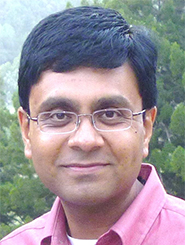 Professor, Department of Computer Science, San Francisco State University
Professor, Department of Computer Science, San Francisco State University
Contact:
Follow me: http://tintin.sfsu.edu/publications.html
The primary mission of my research is to use computer science in novel ways to develop quantitative and mechanistic understandings of diseases and accelerate the development of therapeutics against them. I am especially interested in finding cures for some of the neglected and infectious diseases of humankind. Amongst neglected diseases, my research is focused on diseases caused by helminthes such as schistosomiasis, filariasis, and onchocerciasis. Currently, we are developing algorithmic methods incorporating image and time-series analysis, which will allow for novel ways of screening drugs against the etiological agents of the aforementioned diseases in high-throughput settings. The results from our research will give us the opportunity to rapidly sample large parts of the chemical space and allow effective identification of potential drugs.
An independent and correlated research thrust of my lab lies in the area of molecular informatics. I use this term to encompass the development of mathematical models, algorithms, computational tools, human-data interaction paradigms, and software and hardware systems that can aid in reasoning with complex and multifarious information about molecular structures and structure-activity relationships. Our current research in this area is targeted at designing novel methods to compute similarity between molecules, model non-linear molecular structure-property relationships, and understand the topology of the molecular space itself. On the technology side, we investigate and design software architectures, visualization frameworks, and human-machine interaction paradigms that can wrap our algorithms and mathematical models and lead to real-world systems.
PUBLICATIONS
Algorithmic Mapping and Characterization of the Drug-Induced Phenotypic-Response Space of Parasites Causing Schistosomiasis. IEEE/ACM Trans Comput Biol Bioinform. 2018 Mar-Apr;15(2):469-481. doi: 10.1109/TCBB.2016.2550444. Epub 2016 Apr 7. Singh R, Beasley R, Long T, Caffrey CR.
Structure-Bioactivity Relationship for Benzimidazole Thiophene Inhibitors of Polo-Like Kinase 1 (PLK1), a Potential Drug Target in Schistosoma mansoni. PLoS Negl Trop Dis. 2016 Jan;10(1):e0004356. doi: 10.1371/journal.pntd.0004356. Long T, Neitz RJ, Beasley R, Kalyanaraman C, Suzuki BM, Jacobson MP, Dissous C, McKerrow JH, Drewry DH, Zuercher WJ, Singh R, Caffrey CR.
The QDREC web server: determining dose-response characteristics of complex macroparasites in phenotypic drug screens. Bioinformatics. 2015 May 1;31(9):1515-8. doi: 10.1093/bioinformatics/btu831. Epub 2014 Dec 24. Asarnow D, Rojo-Arreola L, Suzuki BM, Caffrey CR, Singh R.
Chemical and genetic validation of the statin drug target to treat the helminth disease, schistosomiasis. PLoS One. 2014;9(1):e87594. doi: 10.1371/journal.pone.0087594. Rojo-Arreola L, Long T, Asarnow D, Suzuki BM, Singh R, Caffrey CR.
Quantification and clustering of phenotypic screening data using time-series analysis for chemotherapy of schistosomiasis. BMC Genomics. 2012;13 Suppl 1:S4. doi: 10.1186/1471-2164-13-S1-S4. Epub 2012 Jan 17. Lee H, Moody-Davis A, Saha U, Suzuki BM, Asarnow D, Chen S, Arkin M, Caffrey CR, Singh R.
